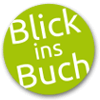Geneeskundig Tijdschrift Voor Nederlandsch-Indië, Volume 29, offers a fascinating glimpse into the medical landscape of the Dutch East Indies in 1889. This historical medical journal provides invaluable insights into the healthcare practices, prevalent diseases, and medical challenges faced by practitioners in the region during the late 19th century.
Written in Dutch, the journal serves as a primary source for understanding the intersection of colonial history and medical science. Researchers and historians interested in the Dutch East Indies, the history of medicine, or the development of healthcare in Southeast Asia will find this volume to be an essential resource. It documents medical advancements, case studies, and discussions relevant to the specific environmental and societal conditions of the time.
This work has been selected by scholars as being culturally important, and is part of the knowledge base of civilization as we know it. This work was reproduced from the original artifact, and remains as true to the original work as possible. Therefore, you will see the original copyright references, library stamps (as most of these works have been housed in our most important libraries around the world), and other notations in the work.
This work is in the public domain in the United States of America, and possibly other nations. Within the United States, you may freely copy and distribute this work, as no entity (individual or corporate) has a copyright on the body of the work.
As a reproduction of a historical artifact, this work may contain missing or blurred pages, poor pictures, errant marks, etc. Scholars believe, and we concur, that this work is important enough to be preserved, reproduced, and made generally available to the public. We appreciate your support of the preservation process, and thank you for being an important part of keeping this knowledge alive and relevant.
 Und dann auf "Zum Home-Bildschirm [+]".
Und dann auf "Zum Home-Bildschirm [+]".

